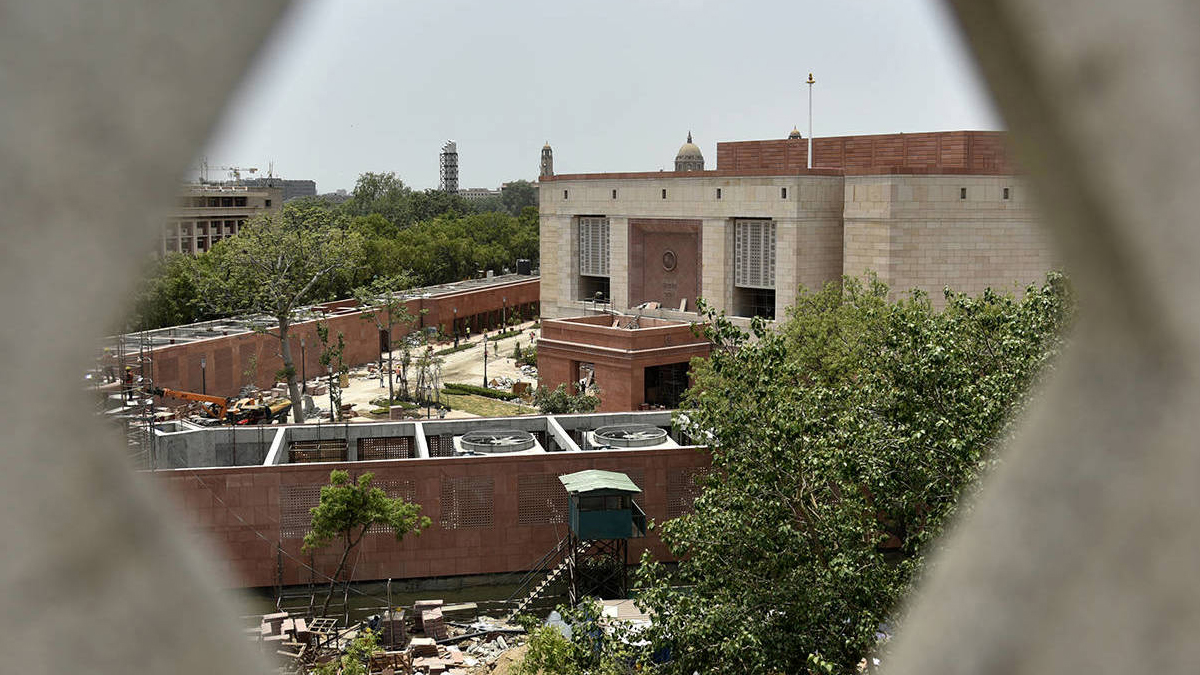
Seats of Power

PRINCETON – Is there an ideal design for parliament buildings and legislative chambers? The question seems abstract, but it comes up surprisingly often as a very concrete challenge. It arose in the 1990s, when Scotland needed an assembly following decentralization in the United Kingdom. It also appears when countries – including Brazil in the 1950s, Nigeria in the 1980s, and Indonesia today – construct new capital cities. And it may emerge when a country decides – as India recently did – that a new parliament building can distance it from the legacy of colonialism.
The new building that Indian Prime Minister Narendra Modi recently inaugurated is part of a comprehensive redesign of Central Vista, the government district in New Delhi. Modi, a consummate architect of his own personality cult, was heavily criticized for leading the ceremony himself, rather than allowing the president to do it. Twenty opposition parties boycotted the event.
Despite the controversy over the ceremony, and complaints about the project’s costs, the interior of the triangular building – which replaces a structure created during the Raj – appears relatively uncontentious. Nonetheless, one has to wonder how well the edifice represents or, more important, facilitates democratic politics. As Winston Churchill once quipped, first “we shape our buildings, and afterwards our buildings shape us.”
A parliamentary space should serve two functions: it should help citizens comprehend who stands for what in political conflicts, and it should enable deputies to hold a government accountable with maximum publicity. It should thus affirm a legitimate opposition’s crucial role – widely recognized at least since 1826, when the English politician John Hobhouse coined the phrase “Her Majesty’s loyal opposition” during a debate in the House of Commons – as a kind of “government-in-waiting.” Simply put, the physical configuration of government ministers and opposition figures matters.
To be sure, in presidential systems like the United States, the cabinet does not appear in the legislature at all, and US presidents do not subject themselves to direct and public questioning by elected representatives. When then-Speaker of the House Nancy Pelosi ripped up a hard copy of Donald Trump’s 2020 State of the Union address, it was a rare display of a direct, public critical interaction between Congress and the president.
But in parliamentary systems, government ministers face the opposition in the legislative chamber, dramatizing political differences in a straightforward way. That explains Churchill’s conviction that British parliamentary democracy, with its two-party system, crucially depended upon the fact that the House of Commons had an oblong structure – in which political positions are starkly apparent – rather than a semi-circular one. He also insisted that “a small Chamber and a sense of intimacy are indispensable,” because it enabled politicians to address each other face to face with “quick, informal interruptions and interchanges” during “free debate.”
Not everyone would agree with Churchill. Former German Chancellor Helmut Kohl, for example, wanted the reconstructed Reichstag in reunified Germany to include more space between government officials and others than originally planned.
In West Germany after World War II, Chancellor Konrad Adenauer advocated a more hierarchical design. Continuing a tradition that went back to Otto von Bismarck, he insisted that the benches for the chancellor and government ministers be elevated above the person addressing the assembly. This setup forced speakers to turn halfway around and look up to criticize ministers behind them.
The shape of Russia’s Duma follows the even more authoritarian “classroom model,” in which deputies sit in rows before the government like obedient pupils. In Austria, speakers must turn away from the assembly to address government ministers, who are seated behind the dais. (In the UK’s House of Commons, by contrast, there are no assigned seats.)
In France, ministers sit awkwardly in the first row of semi-circular benches, with the rest of the parliament behind them – a structure dating from the 1830s. A somewhat similar set-up can be seen in today’s Potemkin parliament in Hungary. In Israel’s Knesset, government ministers sit around a table, with their backs to deputies.
Contrary to Churchill’s assessment, however, semi-circles have an advantage, at least in principle. Lawmakers can observe one another, say, reacting to speeches – a benefit valued by male citizens attending the Ekklesia, the governing body in ancient Athens.
A particularly democratic approach, highlighted by the German jurist Christoph Schönberger, might be the Italian configuration: ministers sit at a table in front of the deputati, who can address them directly from their own assigned seats. They can easily look one another in the eye, and there is no obvious hierarchy. Interaction is encouraged; the assignment of roles is clear to observers; and everyone can see everyone else’s reactions.
Of course, it would be naive to think that a semi-circular setup – or even a fully circular arrangement, as was attempted in West Germany, before the parliament was moved to Berlin – would necessarily make for more harmonious politics. One need only witness South Korean lawmakers pushing one another, even pulling hair, in a favorable semi-circular setting. Remember also that the first hémicycle was introduced under the Jacobins.
With this in mind, we should avoid being taken in by the elegance of India’s state-of-the-art new parliament building. Instead, we should look out for signs of the anti-democratic tendencies of Modi and his Bharatiya Janata Party. India’s government has, after all, espoused an aggressive Hindu-nationalist ideology and sought to suppress the opposition. Just this past March, opposition leader Rahul Gandhi was removed from parliament over a highly dubious court judgment.
The real badge of Modi’s intolerance is a different edifice: the Hindu temple that is currently being built in Ayodhya, on the site of a mosque destroyed by Hindu nationalists in 1992. Parliaments are symbols, but they are also sites of centralized and (in theory) inclusive decision-making; other sites might prove better equipped for exclusionary identity-making.
Jan-Werner Mueller, Professor of Politics at Princeton University, is the author, most recently, of Democracy Rules (Farrar, Straus and Giroux, 2021; Allen Lane, 2021).
Copyright: Project Syndicate, 2023.
www.project-syndicate.org















Comments